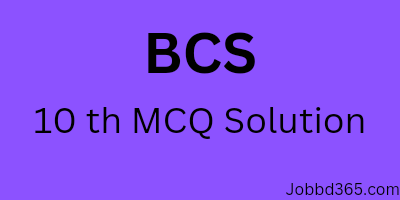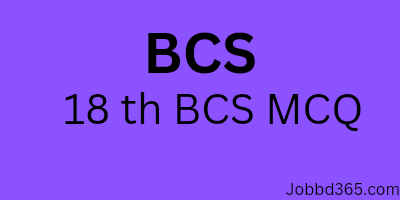Complete Guide to Stock Market Trading for Beginners
This beginner-friendly stock market guide explains essential concepts, trading types, and strategies in a simple way. Learn how to open an account, analyze stocks, and manage risks effectively. With practical tips, visuals, and FAQs, it helps beginners confidently start their trading journey and avoid common mistakes while building wealth.
Outline
-
Introduction
-
What is Stock Market Trading?
-
Why Beginners Should Learn It
-
-
Understanding the Basics
-
What Are Stocks?
-
How the Stock Market Works
-
Key Market Participants
-
-
Types of Stock Market Trading
-
Day Trading
-
Swing Trading
-
Long-Term Investing
-
Position Trading
-
-
Essential Stock Market Terminologies
-
Bull Market & Bear Market
-
IPO (Initial Public Offering)
-
Market Capitalization
-
Dividends
-
-
Steps to Start Trading
-
Opening a Brokerage Account
-
Choosing the Right Broker
-
Understanding Trading Platforms
-
-
How to Analyze Stocks
-
Fundamental Analysis
-
Technical Analysis
-
Sentiment Analysis
-
-
Stock Charts and Indicators
-
Candlestick Patterns
-
Moving Averages
-
RSI (Relative Strength Index)
-
MACD
-
-
Building a Trading Strategy
-
Risk Management Basics
-
Setting Stop Loss & Take Profit
-
Diversification Strategies
-
-
Common Mistakes Beginners Make
-
Emotional Trading
-
Overtrading
-
Ignoring Risk Management
-
-
Tools for Beginners
-
Stock Screeners
-
Trading Apps
-
News & Market Updates
-
-
Risk Management in Trading
-
Importance of Managing Risk
-
Position Sizing
-
Protecting Your Capital
-
-
Psychology of Trading
-
Controlling Fear & Greed
-
Developing Patience
-
Learning from Mistakes
-
-
Best Stocks for Beginners
-
Blue-Chip Stocks
-
Dividend Stocks
-
Index Funds & ETFs
-
-
Stock Market Image Mode (Visual Learning)
-
Infographics for Beginners
-
Charts & Graphs Explained
-
Step-by-Step Visual Guide
-
-
Conclusion
-
Final Thoughts on Trading Journey
-
-
FAQs
-
What is the minimum money required to start trading?
-
Can I trade stocks without a broker?
-
How do I pick the best stocks as a beginner?
-
Is trading stocks risky for beginners?
-
How much profit can I make as a beginner trader?
-
Article
Introduction
Stock market trading might sound overwhelming at first, but once you understand the basics, it becomes an exciting way to grow your wealth. Think of it as planting seeds in a money garden—if you nurture them with knowledge and patience, they’ll grow into financial fruits. This guide is designed for beginners who want to step into the stock market confidently.
Understanding the Basics
What Are Stocks?
Stocks represent ownership in a company. When you buy shares, you become a part-owner of that company. If the company grows, your shares grow in value.
How the Stock Market Works
The stock market is like a giant marketplace where buyers and sellers trade shares. The value of a stock goes up and down depending on demand, company performance, and global factors.
Key Market Participants
-
Retail Investors (like you and me)
-
Institutional Investors (banks, hedge funds)
-
Market Makers & Brokers
Types of Stock Market Trading
-
Day Trading: Buying and selling within the same day.
-
Swing Trading: Holding stocks for days or weeks.
-
Long-Term Investing: Buying quality stocks and holding for years.
-
Position Trading: Focusing on long-term trends.
Essential Stock Market Terminologies
-
Bull Market: Prices going up.
-
Bear Market: Prices going down.
-
IPO: When a company sells its shares to the public for the first time.
-
Dividends: Profit-sharing with shareholders.
Steps to Start Trading
-
Open a brokerage account.
-
Choose a reliable broker (with low fees & easy platforms).
-
Learn to use trading apps.
How to Analyze Stocks
-
Fundamental Analysis: Study financial reports.
-
Technical Analysis: Study price charts & indicators.
-
Sentiment Analysis: See how news and events impact stock movement.
Stock Charts and Indicators
Charts are the language of the market. A simple candlestick chart can tell you whether traders are buying or selling.
-
Moving Averages: Show average price trends.
-
RSI: Measures overbought or oversold conditions.
-
MACD: Helps identify trend reversals.
Building a Trading Strategy
You need a plan before entering any trade.
-
Always set a stop loss to protect your money.
-
Diversify—don’t put all your eggs in one basket.
Common Mistakes Beginners Make
-
Trading based on emotions.
-
Overtrading without a plan.
-
Ignoring the golden rule: “Never risk more than you can afford to lose.”
Tools for Beginners
Some great beginner-friendly tools include:
-
Yahoo Finance & Google Finance for news.
-
TradingView for chart analysis.
-
Robinhood, eToro, or Interactive Brokers for trading.
Risk Management in Trading
Without risk management, even the best strategy fails. Learn position sizing and use protective stop losses to save your capital.
Psychology of Trading
Trading is 80% psychology and 20% strategy. Fear and greed can ruin trades. Successful traders remain calm and disciplined, even during market volatility.
Best Stocks for Beginners
-
Blue-Chip Stocks: Like Apple, Microsoft, and Google.
-
Dividend Stocks: Provide regular income.
-
Index Funds & ETFs: Best for hands-free investing.
Stock Market Image Mode (Visual Learning)
A picture is worth a thousand words. Beginners should use infographics, trading charts, and visual guides to understand patterns. Example visuals:
-
A candlestick chart showing uptrend and downtrend.
-
An infographic of “How to place your first trade.”
-
A flowchart explaining the stock market process.
Conclusion
Stock market trading for beginners doesn’t need to be complicated. Start small, learn daily, and never stop practicing. Remember, trading is a marathon, not a sprint. Build patience, manage your risks, and success will follow.
FAQs
1. What is the minimum money required to start trading?
You can start with as little as $100, but more capital gives flexibility.
2. Can I trade stocks without a broker?
No, you need a broker to access the stock market.
3. How do I pick the best stocks as a beginner?
Look for stable companies with strong growth and dividend history.
4. Is trading stocks risky for beginners?
Yes, but with proper risk management, the risks can be minimized.
5. How much profit can I make as a beginner trader?
There’s no fixed amount—it depends on your strategy, capital, and discipline.









